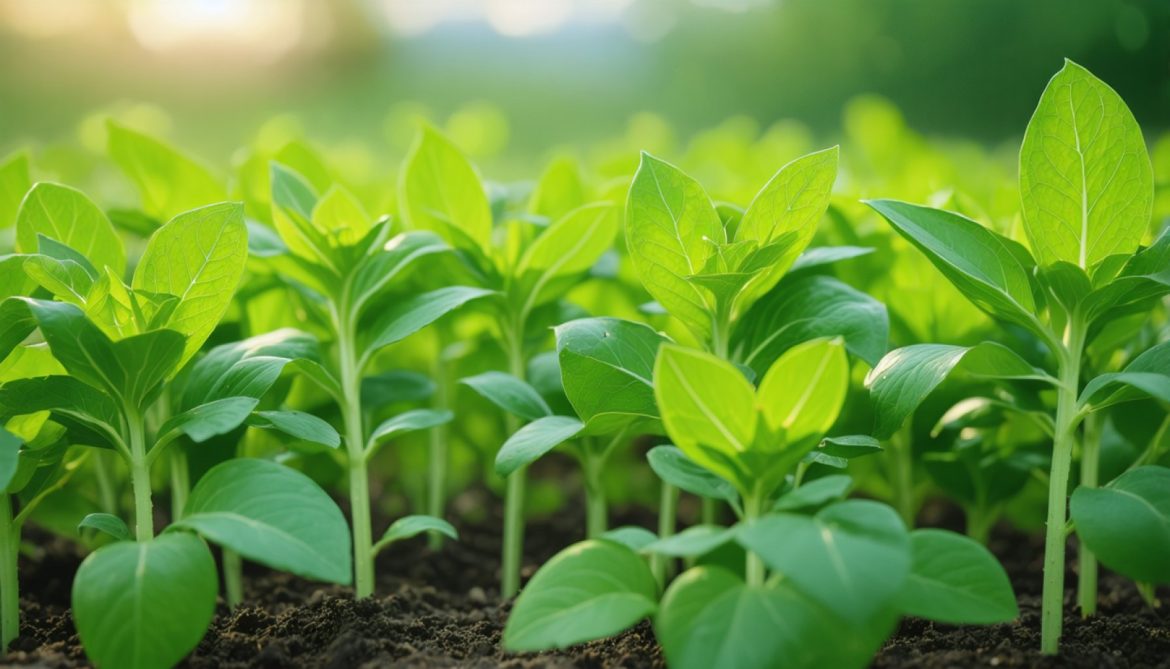- The agricultural biotechnology market is expected to grow significantly, from USD 43.2 billion in 2025 to USD 79.7 billion by 2032.
- Population growth to 9 billion by mid-century increases demand for efficient and sustainable agricultural practices.
- Biotech innovations, such as drought-resistant and flood-tolerant crops, help farmers adapt to climate change and shrinking arable land.
- Leading companies like Syngenta, DuPont, and Bayer CropScience drive advancements in genetic engineering and molecular diagnostics.
- Government investments support global research and development, aiding farmers in meeting food demands and reducing environmental impact.
- Agricultural biotechnology plays a crucial role in future food security, balancing increased production with sustainability and environmental responsibility.
In an age where the unpredictable dictates farming schedules more than the plow, the agricultural biotechnology field bursts forth as a beacon of innovation. Forecasts predict a staggering rise in the global market value, projected to swell from USD 43.2 billion in 2025 to an astonishing USD 79.7 billion by 2032. As population growth barrels toward 9 billion by mid-century, the demand for efficiency and sustainability climbs higher than the cornstalks of Iowa.
Underneath it all, a cluster of catalytic forces fans the flames of growth. The relentless climb of global food demand pressures farmers to innovate. With shrinking arable land and volatile climates, biotechnology arms them with new genetic tools—drought-resistant wheat, flood-tolerant rice, and more—tailored for a future fraught with environmental stress. This push toward sustainable farming not only promises reduced chemical dependency but also nods to a lower carbon footprint, aligning with mounting consumer calls for eco-conscious produce.
Innovation flows thick and fast from a host of industry titans. Giants like Syngenta, DuPont, and Bayer CropScience spearhead advancements, competing in an arena where genetic engineering and molecular diagnostics are not only cutting-edge but necessary. Their technologies trickle into the fields, influencing everything from seed resilience to pest control.
Government investment adds another layer, an affirming nod to research and development, propelling biotech solutions from lab benches into furrowed fields worldwide, particularly in regions across North America, Europe, and Asia-Pacific. This concerted push helps farmers not only meet soaring demands but also mitigate the unpredictability of a warming planet.
Here lies the crux of the story: agricultural biotechnology isn’t simply about enhancing yields or combating pests with scientific elegance. It stands at the intersection of survival and progress, pivotal in the storyboard of our planet’s future. As we hurtle toward what can only be described as a crossroads in agriculture, embracing these innovations may well determine whether we navigate the challenges ahead with resilience or reap a harvest of missed opportunities.
So, as the sun sets on traditional farming methodologies and rises on a brave new world of agricultural biotech, the industry and its stakeholders are tasked with a mission critical to humanity’s prospects: not just to feed billions, but to do so with foresight and responsibility.
Agricultural Biotechnology: The Future of Sustainable Farming
Introduction to Agricultural Biotechnology
In the face of escalating environmental changes and a burgeoning global population, agricultural biotechnology emerges as a breakthrough force. This field, expected to grow from USD 43.2 billion in 2025 to USD 79.7 billion by 2032, offers innovative solutions for sustainable farming. Here’s an in-depth look at the nexus of technology and agriculture, where genetically modified organisms (GMOs) and biotech advancements are set to redefine farming.
Key Innovations in Agricultural Biotechnology
1. Genetically Modified Crops: Crops like drought-resistant wheat and flood-tolerant rice are becoming vital. These genetically engineered crops are designed to withstand harsh climatic conditions, ensuring food security.
2. Pest Management Innovations: Biotechnology leverages microbial pesticides and genetically modified insects to reduce reliance on chemical pesticides, contributing to healthier ecosystems.
3. Nutritionally Enhanced Foods: Through biofortification, crops are now enriched with vitamins and minerals. An example is Golden Rice, which is fortified with Vitamin A to address nutritional deficiencies.
4. CRISPR Technology: The gene-editing tool CRISPR/Cas9 enables precise modifications in crop genomes, enhancing traits like yield, disease resistance, and stress tolerance.
How-To Steps & Life Hacks for Farmers
– Adopt Integrated Pest Management: Utilize bio-insecticides and crop rotation to reduce chemical pesticide use.
– Opt for Drought and Pest-Resistant Seeds: Choose seeds that have been genetically modified for resilience to ensure consistent yields.
– Invest in Training and Technology: Farmers should seek training on the latest biotech developments and how to implement them in their practices.
Market Forecasts & Industry Trends
The agricultural biotechnology market’s growth is driven by increasing demand for high-yield and stress-tolerant crops. North America, with its robust R&D and supportive policies, leads the market, followed by rapidly advancing regions in Asia-Pacific and Europe.
Controversies & Limitations
Despite its promise, agricultural biotechnology faces criticisms regarding GMOs’ safety and ecological impact. Consumer apprehension and regulatory challenges continue in some regions, emphasizing the necessity for transparent communication and rigorous testing.
Security & Sustainability Concerns
Biotechnology provides pathways to sustainable farming but requires careful management to prevent monoculture risks and ensure biodiversity conservation. Governments and organizations advocate for sustainable practices to align with environmental goals.
Insights & Predictions
– Precision Agriculture: The integration of IoT and AI in farming will optimize resource use and enhance data-driven decision-making.
– Supportive Policies: Continued government support is anticipated to boost innovations and bridge gaps between biotech advancements and field applications.
Pros & Cons Overview
Pros:
– Increased crop resilience and yield.
– Reduced dependence on chemical fertilizers and pesticides.
– Enhanced nutritional content of foods.
Cons:
– Potential ecological risks and biodiversity concerns.
– Ethical issues surrounding genetic modifications.
– Market acceptance challenges, especially in regions skeptical of GMOs.
Actionable Recommendations
1. Stay Updated: Farmers and stakeholders should keep abreast of emerging biotechnological trends and tools.
2. Diversify Crops: Implement crop diversification to mitigate potential risks from biotech adaptation.
3. Engage in Policy Dialogues: Participate in discussions to shape balanced regulations promoting innovation while ensuring safety.
For more insights on agricultural biotech and its impact on future farming, visit International Food Policy Research Institute or US Department of Agriculture.
By embracing agricultural biotechnology and its advancements, we are not only moving towards efficient and sustainable farming methods but also ensuring a future where food security does not come at the expense of environmental health.



